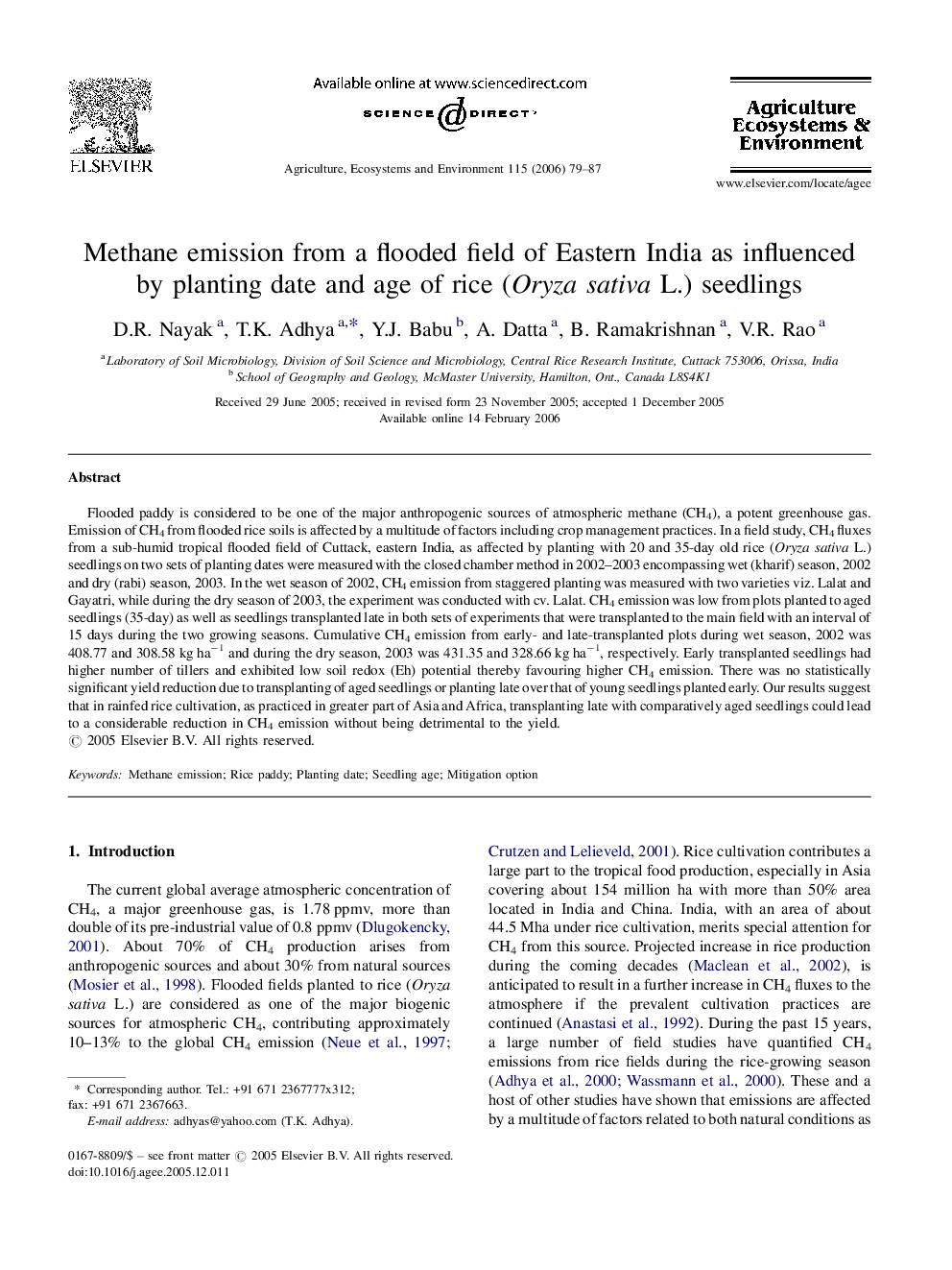| Article ID | Journal | Published Year | Pages | File Type |
|---|---|---|---|---|
| 2415881 | Agriculture, Ecosystems & Environment | 2006 | 9 Pages |
Abstract
Flooded paddy is considered to be one of the major anthropogenic sources of atmospheric methane (CH4), a potent greenhouse gas. Emission of CH4 from flooded rice soils is affected by a multitude of factors including crop management practices. In a field study, CH4 fluxes from a sub-humid tropical flooded field of Cuttack, eastern India, as affected by planting with 20 and 35-day old rice (Oryza sativa L.) seedlings on two sets of planting dates were measured with the closed chamber method in 2002-2003 encompassing wet (kharif) season, 2002 and dry (rabi) season, 2003. In the wet season of 2002, CH4 emission from staggered planting was measured with two varieties viz. Lalat and Gayatri, while during the dry season of 2003, the experiment was conducted with cv. Lalat. CH4 emission was low from plots planted to aged seedlings (35-day) as well as seedlings transplanted late in both sets of experiments that were transplanted to the main field with an interval of 15 days during the two growing seasons. Cumulative CH4 emission from early- and late-transplanted plots during wet season, 2002 was 408.77 and 308.58 kg haâ1 and during the dry season, 2003 was 431.35 and 328.66 kg haâ1, respectively. Early transplanted seedlings had higher number of tillers and exhibited low soil redox (Eh) potential thereby favouring higher CH4 emission. There was no statistically significant yield reduction due to transplanting of aged seedlings or planting late over that of young seedlings planted early. Our results suggest that in rainfed rice cultivation, as practiced in greater part of Asia and Africa, transplanting late with comparatively aged seedlings could lead to a considerable reduction in CH4 emission without being detrimental to the yield.
Related Topics
Life Sciences
Agricultural and Biological Sciences
Agronomy and Crop Science
Authors
D.R. Nayak, T.K. Adhya, Y.J. Babu, A. Datta, B. Ramakrishnan, V.R. Rao,
